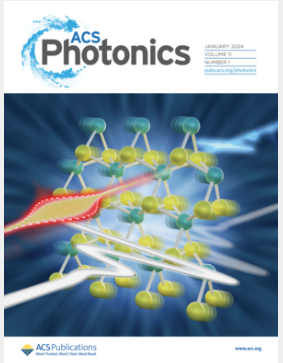All-Optical Synapses Enabled by Photochromic Materials for High-Accuracy Optical Signal Recognition
IF 6.7
1区 物理与天体物理
Q1 MATERIALS SCIENCE, MULTIDISCIPLINARY
引用次数: 0
Abstract
Developing artificial synapses capable of optical signal recognition is crucial for advancing neuromorphic computing. However, achieving high accuracy of synapse-based optical signal recognition, which avoids complex procedures of electrode fabrication and follows a contactless pathway, remains a significant challenge. In this study, we utilize a photochromic film of chemically synthesized WO3 with a transmission modulation of 77% to construct all-optical artificial synapses. Unlike optoelectronic approaches, the synapses leverage light for stimulation and contactless response measurement. Typical synaptic behaviors, including paired-pulse facilitation, learning experience, short-term memory, and long-term memory, can be demonstrated through transmittance responses under UV beam stimulation. Furthermore, the WO3 thin film can simulate the memory behavior of human skin’s UV detection when transitioning from outdoor to indoor environments and back to outdoor conditions. Next, a recurrent neural network processes the synaptic transmittance responses to recognize optical signals, achieving 100% accuracy for preset light exposure durations and powers, 95% accuracy for closely spaced durations with a 1 s difference, and 100% accuracy for power differences of 14.5 mW. Moreover, 26 English alphabet letters encoded to different optical pulse trains can be recognized using an all-optical artificial synapse integrated with a recurrent neural network, achieving 100% accuracy. This work highlights the potential of photochromic materials in enabling high-performance neuromorphic computing and provides a new pathway for integrating optical signal processing with artificial intelligence.

利用光致变色材料实现全光突触,实现高精度光学信号识别
开发能够识别光信号的人工突触对于推进神经形态计算至关重要。然而,实现基于突触的高精度光信号识别,避免复杂的电极制造过程并遵循非接触途径,仍然是一个重大挑战。在这项研究中,我们利用化学合成的传输调制率为77%的WO3光致变色膜来构建全光人工突触。与光电方法不同,突触利用光进行刺激和非接触响应测量。典型的突触行为,包括配对脉冲促进、学习经验、短期记忆和长期记忆,可以通过紫外线刺激下的透射率反应来展示。此外,WO3薄膜可以模拟人体皮肤在从室外环境过渡到室内环境和返回室外环境时的紫外线检测记忆行为。接下来,循环神经网络处理突触透射率响应以识别光信号,对预设的光照持续时间和功率实现100%的准确率,对间隔较近的持续时间实现95%的准确率,对14.5 mW的功率差异实现100%的准确率。此外,利用集成了循环神经网络的全光人工突触,可以识别26个编码成不同光脉冲序列的英文字母,准确率达到100%。这项工作强调了光致变色材料在实现高性能神经形态计算方面的潜力,并为将光信号处理与人工智能相结合提供了新的途径。
本文章由计算机程序翻译,如有差异,请以英文原文为准。
求助全文
约1分钟内获得全文
求助全文
来源期刊

ACS Photonics
NANOSCIENCE & NANOTECHNOLOGY-MATERIALS SCIENCE, MULTIDISCIPLINARY
CiteScore
11.90
自引率
5.70%
发文量
438
审稿时长
2.3 months
期刊介绍:
Published as soon as accepted and summarized in monthly issues, ACS Photonics will publish Research Articles, Letters, Perspectives, and Reviews, to encompass the full scope of published research in this field.
 求助内容:
求助内容: 应助结果提醒方式:
应助结果提醒方式:


